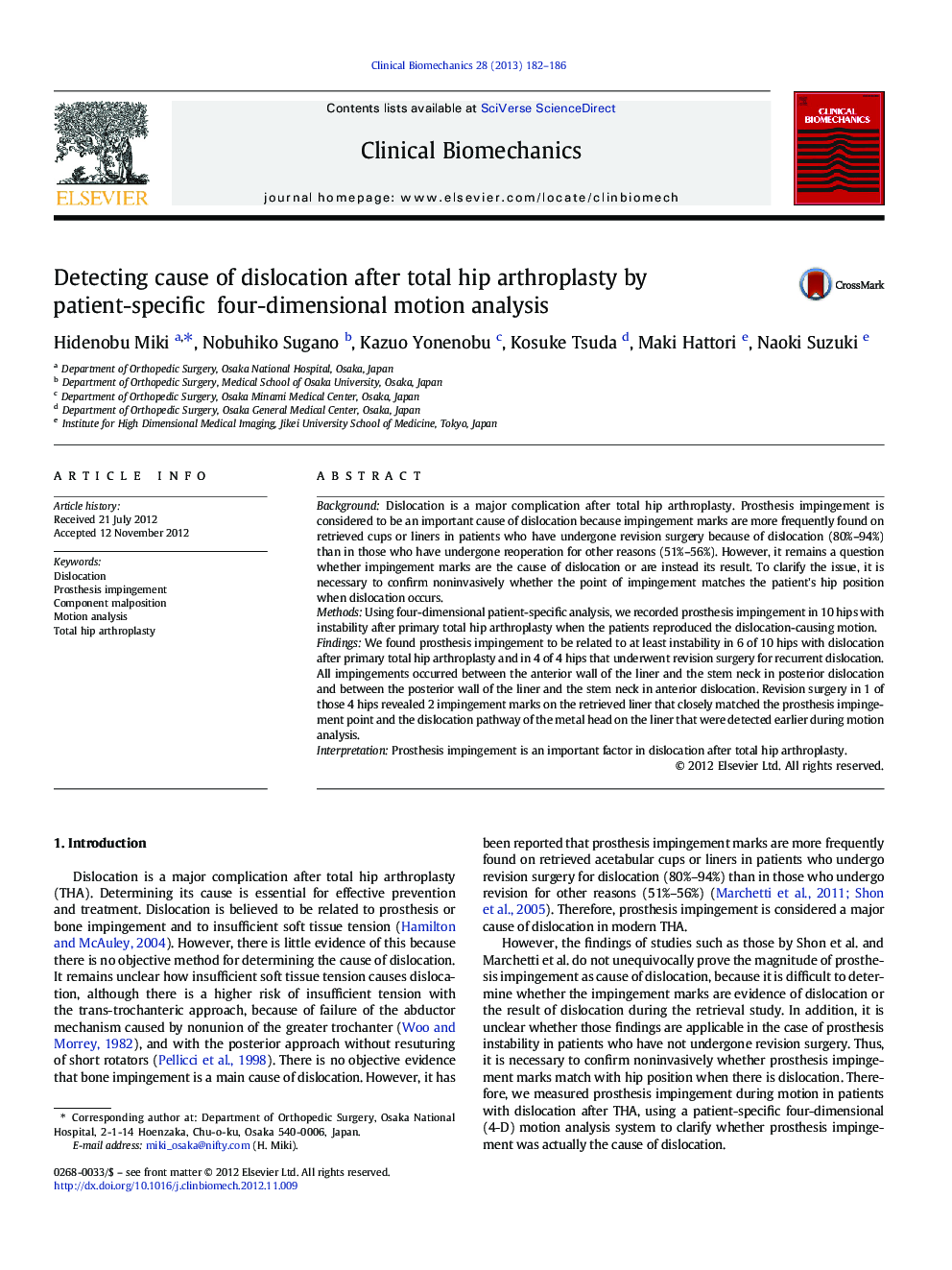| Article ID | Journal | Published Year | Pages | File Type |
|---|---|---|---|---|
| 6205055 | Clinical Biomechanics | 2013 | 5 Pages |
BackgroundDislocation is a major complication after total hip arthroplasty. Prosthesis impingement is considered to be an important cause of dislocation because impingement marks are more frequently found on retrieved cups or liners in patients who have undergone revision surgery because of dislocation (80%-94%) than in those who have undergone reoperation for other reasons (51%-56%). However, it remains a question whether impingement marks are the cause of dislocation or are instead its result. To clarify the issue, it is necessary to confirm noninvasively whether the point of impingement matches the patient's hip position when dislocation occurs.MethodsUsing four-dimensional patient-specific analysis, we recorded prosthesis impingement in 10 hips with instability after primary total hip arthroplasty when the patients reproduced the dislocation-causing motion.FindingsWe found prosthesis impingement to be related to at least instability in 6 of 10 hips with dislocation after primary total hip arthroplasty and in 4 of 4 hips that underwent revision surgery for recurrent dislocation. All impingements occurred between the anterior wall of the liner and the stem neck in posterior dislocation and between the posterior wall of the liner and the stem neck in anterior dislocation. Revision surgery in 1 of those 4 hips revealed 2 impingement marks on the retrieved liner that closely matched the prosthesis impingement point and the dislocation pathway of the metal head on the liner that were detected earlier during motion analysis.InterpretationProsthesis impingement is an important factor in dislocation after total hip arthroplasty.
